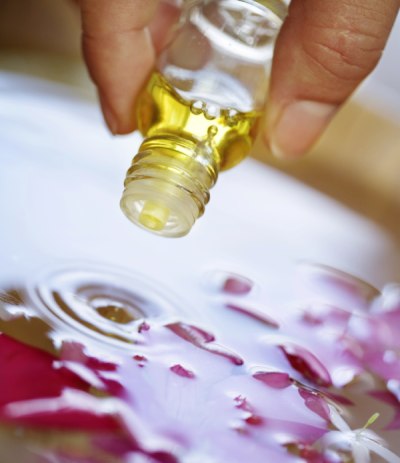For a cyclist, professional and leisure-cruiser alike, there can be little worse than a mid-ride attack of asthma.
Over 2.2 million Australians are affected by the condition (the world’s highest per-capita rate) and numbers are rising. Asthma is characterised by shortness of breath, wheezing, coughing and tightness in the chest, causing much distress to the sufferer. It is usually brought on by a trigger, causing the muscle in the walls of the bronchioles (the lungs’ labyrinth of airways), to contract therefore reducing airflow. This is usually a functional immune response to alien or toxic bodies. But sometimes the airways overreact, known as bronchial hyper-responsiveness, often to harmless causes or even no known cause. The body then forms antibodies and produces histamine, causing inflammation and increased mucus production.
Diagnosed asthmatics usually control their condition with allopathic medicine; a prophylactic inhaler used daily for prevention and/or a bronchodilator inhaler to relieve symptoms. Whilst prescribed medication should never be replaced without GP advice, there are  also ways to complement conventional medicine for long-term asthma prevention. Many asthma cases are allergy-related, and you can help regulate overactive or inflammatory reactions and reduce symptoms by identifying allergens such as environmental pollutants, house dust mites or domestic pets. Cyclists are most commonly affected by airborne pollen released from grasses, trees, plants, and even weeds. Depending on which part of Australia you live in, October to December can be troublesome hay fever months. Other causes of asthma include infections, nutritional deficiency and postural imbalance. Each sufferer will need to find what method of complementary care works best for them.
also ways to complement conventional medicine for long-term asthma prevention. Many asthma cases are allergy-related, and you can help regulate overactive or inflammatory reactions and reduce symptoms by identifying allergens such as environmental pollutants, house dust mites or domestic pets. Cyclists are most commonly affected by airborne pollen released from grasses, trees, plants, and even weeds. Depending on which part of Australia you live in, October to December can be troublesome hay fever months. Other causes of asthma include infections, nutritional deficiency and postural imbalance. Each sufferer will need to find what method of complementary care works best for them.
 also ways to complement conventional medicine for long-term asthma prevention. Many asthma cases are allergy-related, and you can help regulate overactive or inflammatory reactions and reduce symptoms by identifying allergens such as environmental pollutants, house dust mites or domestic pets. Cyclists are most commonly affected by airborne pollen released from grasses, trees, plants, and even weeds. Depending on which part of Australia you live in, October to December can be troublesome hay fever months. Other causes of asthma include infections, nutritional deficiency and postural imbalance. Each sufferer will need to find what method of complementary care works best for them.
also ways to complement conventional medicine for long-term asthma prevention. Many asthma cases are allergy-related, and you can help regulate overactive or inflammatory reactions and reduce symptoms by identifying allergens such as environmental pollutants, house dust mites or domestic pets. Cyclists are most commonly affected by airborne pollen released from grasses, trees, plants, and even weeds. Depending on which part of Australia you live in, October to December can be troublesome hay fever months. Other causes of asthma include infections, nutritional deficiency and postural imbalance. Each sufferer will need to find what method of complementary care works best for them.Many find relief through a qualified aromatherapy massage therapist performing a back and chest massage using antispasmodic and antibacterial essential oils such as camomile, eucalyptus and tea tree. Activating the ‘lung’ acupressure points is effective at reducing asthma induced anxiety, and preventing chest infections caused by mucus build-up. Inhaling a few drops of the above oils (not through steam inhalation during attacks) on a tissue can relieve symptoms. Other effective oils are lavender and frankincense, the latter slowing and deepening the breathing. A herbalist will prescribe one or more of many effective herbs to treat asthma. One of the premier herbs is nettle, known for its antihistamine and immune-building actions. It is most beneficial when taken from the fresh plant and used in tincture form.
 Australians are all too familiar with acutely dry air, and when cyclists hit those hot, parched summer winds, it can be a challenge to their lungs. A few drops of the above mentioned oils in a humidifier can make nights more comfortable and recovery quicker. In susceptible individuals, food may be the culprit. Dairy foods are a common antagonist for some asthmatics, but many miss the food additives that sneak into our diet, such as the preservative, sodium metabisulphite, and the yellow food colouring, tartrazine, which can be particularly troublesome to respiratory health. A GP or qualified nutritionist can offer allergy testing. Anti-inflammatory evening primrose, flaxseed and fish oils are ‘liquid gold’ to many asthmatics. Garlic and onions are also anti-inflammatory and inhibit infection. Vitamin C, best consumed from red and purple berries and citrus fruits, is excellent for exercise-induced asthma, reducing histamine production and fighting environmental toxins. Vitamin A, which helps protect the lining of the lungs, along with C and E, are your army of antioxidants— copious within broccoli, capsicums, tomatoes and carrots.
Australians are all too familiar with acutely dry air, and when cyclists hit those hot, parched summer winds, it can be a challenge to their lungs. A few drops of the above mentioned oils in a humidifier can make nights more comfortable and recovery quicker. In susceptible individuals, food may be the culprit. Dairy foods are a common antagonist for some asthmatics, but many miss the food additives that sneak into our diet, such as the preservative, sodium metabisulphite, and the yellow food colouring, tartrazine, which can be particularly troublesome to respiratory health. A GP or qualified nutritionist can offer allergy testing. Anti-inflammatory evening primrose, flaxseed and fish oils are ‘liquid gold’ to many asthmatics. Garlic and onions are also anti-inflammatory and inhibit infection. Vitamin C, best consumed from red and purple berries and citrus fruits, is excellent for exercise-induced asthma, reducing histamine production and fighting environmental toxins. Vitamin A, which helps protect the lining of the lungs, along with C and E, are your army of antioxidants— copious within broccoli, capsicums, tomatoes and carrots.Fish and seeds are your vitamin E providers. Take a quality multivitamin/mineral supplement with good levels of vitamin B6, to help reduce asthma symptoms, and the mineral magnesium—a bronchodilator. Away from your wheels, swimming in warm (preferably not chlorinated) water is superb for asthmatics as the humidified air helps to relax the airways, and the breast stroke strengthens the chest muscles. Misaligned thoracic vertebrae would not easily be missed by a regular cyclist, but any upper back problems should be checked out by a chiropractor or osteopath as they can affect respiratory system health. Structured breathing exercises are highly beneficial for opening up and strengthening the chest area. The world-renowned Buteyko Method is used as standard therapy for asthmatics in Russia. Professor Buteyko, who researched the condition for over 30 years, proclaimed that asthmatics were afflicted by long-term, hidden hyperventilation and shallow breathing. These actions cause low carbon dioxide levels, which in turn cause constriction of the bronchial tubes’ smooth muscle.
In 1995, The Australian Association of Asthma Foundations sponsored blinded clinical trials on the method over 12 weeks. They resulted in a 96% median reduction in participants’ need for reliever medication, and 49% from preventer medication. Longer trials undertaken in New Zealand in 2003 showed similar results. A course is usually taught for 90 minutes over five days. Asthma is a multifaceted condition, but life need not be grim for asthmatic cyclists. Aim to make your cycling breathtaking and not breathless by managing your condition through a process of eliminating suspected triggers one at a time. And remember, even though the IOC has banned all oral and injectable reliever medications, many Olympic cyclists have asthma, and continue with great success in their profession.

